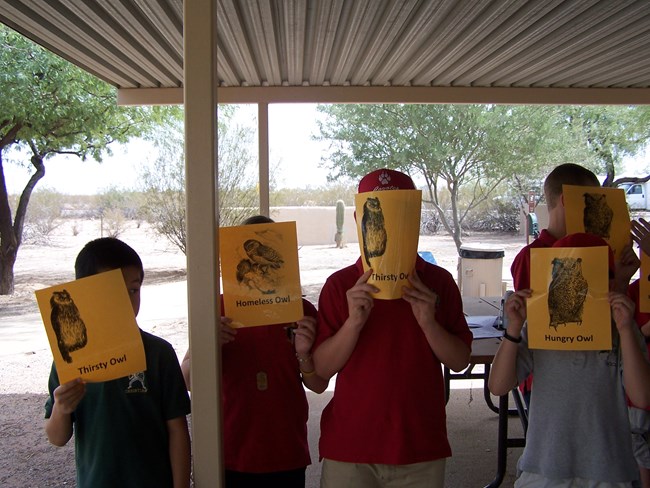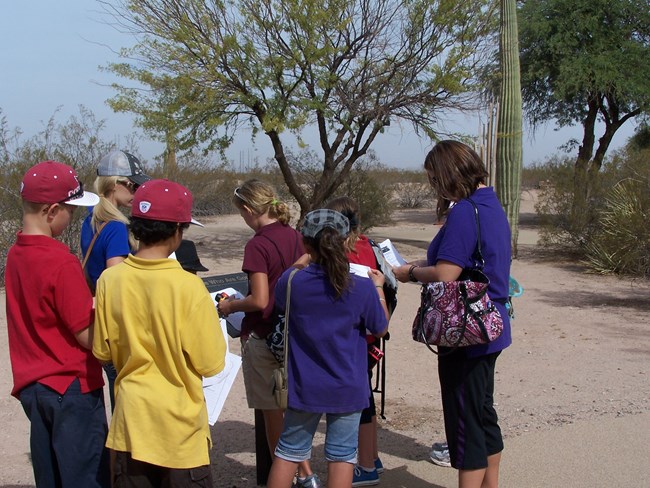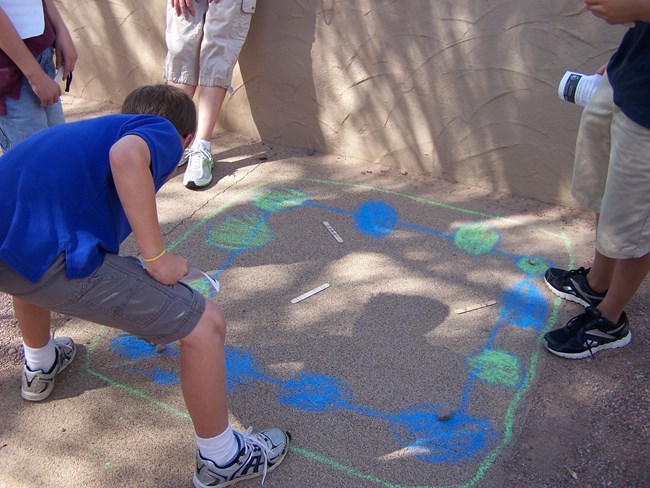
NPS Your group of 50 students total (maximum) will likely be divided into smaller workgroups. When you make your reservation the number of workgroups will be discussed. You may divide your total group ahead of time or we will do that when you arrive on-site. This is to provide a positive learning experience, respect the rights of other visitors, and protect the important resources we manage. Workgroups rotate through several learning stations including visiting the Great House, doing a hands-on activity, viewing the park film, and visiting the museum, depending on your time, interests, and requests. Our main program requires at least one and one half hours to work with the students and can be followed by lunch in the park picnic area. We would most prefer two hours with the students followed by lunch. If your time permits, after all of the students have eaten, we will play a large group game while we wait for the buses to be readied for student departure. 
Students may be asked to work with their chaperone without a ranger or volunteer guide. The student workbooks will lead them from point to point and suggest topics for discussion. There is more information in the student workbook than can be covered in one hour so the school can plan how in-depth to go in the studies. Teachers should plan a follow-up in school after the park visit to bring closure to the workbook process. 
The topics that will be covered include Hohokam Culture agriculture and plant use, Hohokam Culture trade, and the building and use of the Casa Grande. The agriculture station could be learning about cotton and working to remove the seeds, or perhaps using a mano and metate to grind mesquite beans into flour. Sometimes we have gourds or other traditional plants available. The trade station includes making a modern sample in the tradition of the Hohokam Culture and could include weaving a small yarn basket,using a pump drill to create a balsa wood necklace, folding a personal "split twig" figure from a pipecleaner,using Crayola clay to make a pinch pot, or other similar arts. The exact stations that are offered on the day of your visit are "ranger's choice" as they will depend on materials available. The group game is a summary of the program where the students are reminded that food, water, shelter, and space are required by all living things and affect the lives of all living things. |
Last updated: February 24, 2015
